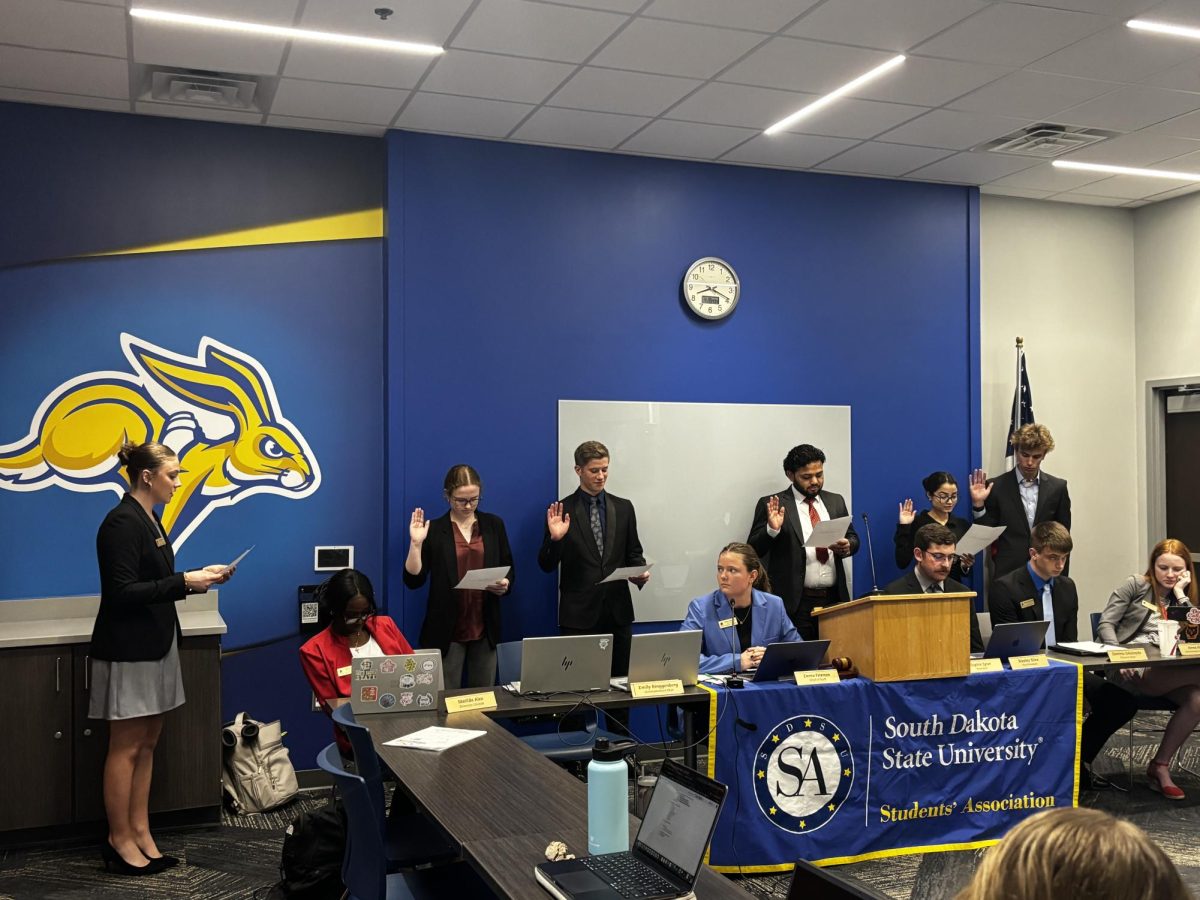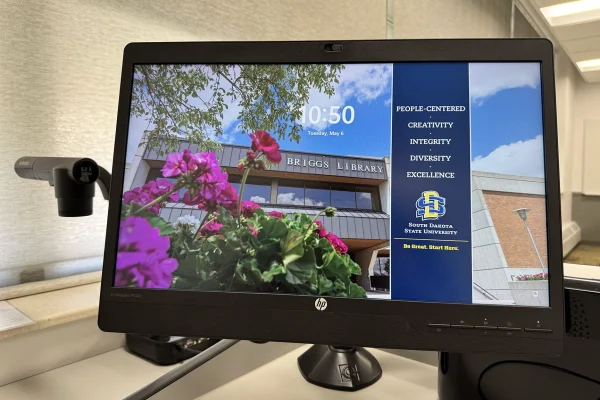New faculty offers more information for interns
October 28, 2008
Jamison Lamp
The steps to developing and exploring internships have become easier due to an on-campus internship coordinator and online resources.
SDSU is a Division I Higher Education Institution that is educating workers of tomorrow, Cami Veire, internship coordinator, instructor and academic adviser in the College of General Studies said.
SDSU offers ways for students to access information about internship opportunities.
“Students need a clear understanding of campus resources,” Veire said. “We (the College of General Studies) touch every student before they graduate in some way, shape or form.”
“My department put out a handout that showed internships available,” said Jennie Hublou, a graduate student in counseling and human resource development.
“It would have been really nice to know about the internship coordinator.”
“Our goal is to have a ‘clearinghouse’ of resources,” Veire said.
Along with the internship coordinator, the College of General Studies has online software that allows students to access employer information, schedule on-campus interviews and do job research. Campanile Connections is accessible through http://careercenter.sdstate.edu.
There are numerous benefits to having successfully completed internships. Students have options to explore different areas in their fields of study.
“Consider completing multiple internships if you are torn between two or more work specific responsibilities. There are situations where students have multiple internships before they graduate,” Veire said.
“Try things on and get paid for it during the summer,” said Veire.
Students must take the initiative to start looking and planning for their internships. She hopes to help students get connected with employers.
“Opportunities are profound; we have to get students connected with those opportunities,” Veire said.
“We need to cultivate high-end relationships in South Dakota, the region, U.S. and globally.”
Other key steps include strong communication. Veire compared the internship process to a triangle. The triangle includes the student, a faculty member and the on-site mentor, with the process being student-driven.
“It is very important to develop a strong relationship with your academic adviser and the faculty internship coordinator within your college,” Veire said. “We need fluid communication so that everybody is on the same page.”
Students also should start planning for internships early.
“Procrastination cannot be part of the process,” Veire said. “Be proactive. Students should begin thinking about an internship and creating a time line. This can begin as early as their sophomore year.”
“The best thing that helped me was that I started planning in advance,” Hublou said.
Valuable lessons learned during internships can be hard to replace.
“I felt that it was a good experience, not only educationally but professionally as well,” Hublou said. “It helps you know how to look for jobs and the professional experience is really good.”
Writing résumés can be a challenging process.
“I had a good basis for writing my résumé; I had taken technical communication, so I had a pretty good start,” Hublou said.
Internships give practical application to curriculum-based learning.
“It was nice because Volunteers of America actually used one of the family theories I learned about,” Hublou said. “Internships really apply what you learned in class to the real world.
“I learned more in the internship than I ever imagined.”
There is strong support for the Internship Coordinator position.
“The Students’ Association is very supportive of this position and continue to be supportive,” Veire said. “It is nice to know that leadership values the significance of internships as it relates to overall student success.”
Components of a good résumé
Plan to have at least two versions of your résumé: a traditional hard copy format and an electronic version.
1. Know your target audience and tailor each résumé to the position and/or employer.
2. Emphasize transferable skills such as leadership, communication, accomplishments and results of your actions. If your experiences to date are unrelated to your field, include them but focus on the transferable skills you have developed.
3. Unpaid experience can be included in your experience section if you have been involved enough to warrant a “job” description and if you focus on transferable skills.
4. Remember that the résumé is a summary, not an autobiography, so limit it to one or two pages with absolutely no typos or misspelled words.
5. While the categories you use may vary to reflect your background, typical categories are: contact information, objective, education, related courses, experience, special skills, leadership, memberships, activities and volunteer work.
6. Avoid using résumé templates. They often don’t allow you to make needed changes to spacing and headings.
7. Most employers take less than a minute to skim a résumé for the highlights, so use an easy-to-read font, such as Times New Roman or Universal in an 11 to 12 point font size. Margins and other white space should contribute to an inviting overall appearance.
8. Avoid mixing font styles and overusing graphics and underlining.
9. Use brief phrases to describe your experience and start the phrases with action verbs. Prioritize the information in your job descriptions and list first that which is most important for the employer to see.
10. List information in reverse chronological order with the categories; i.e. most recent first.
-Tips from Susan Fredrikson, career development specialist





















